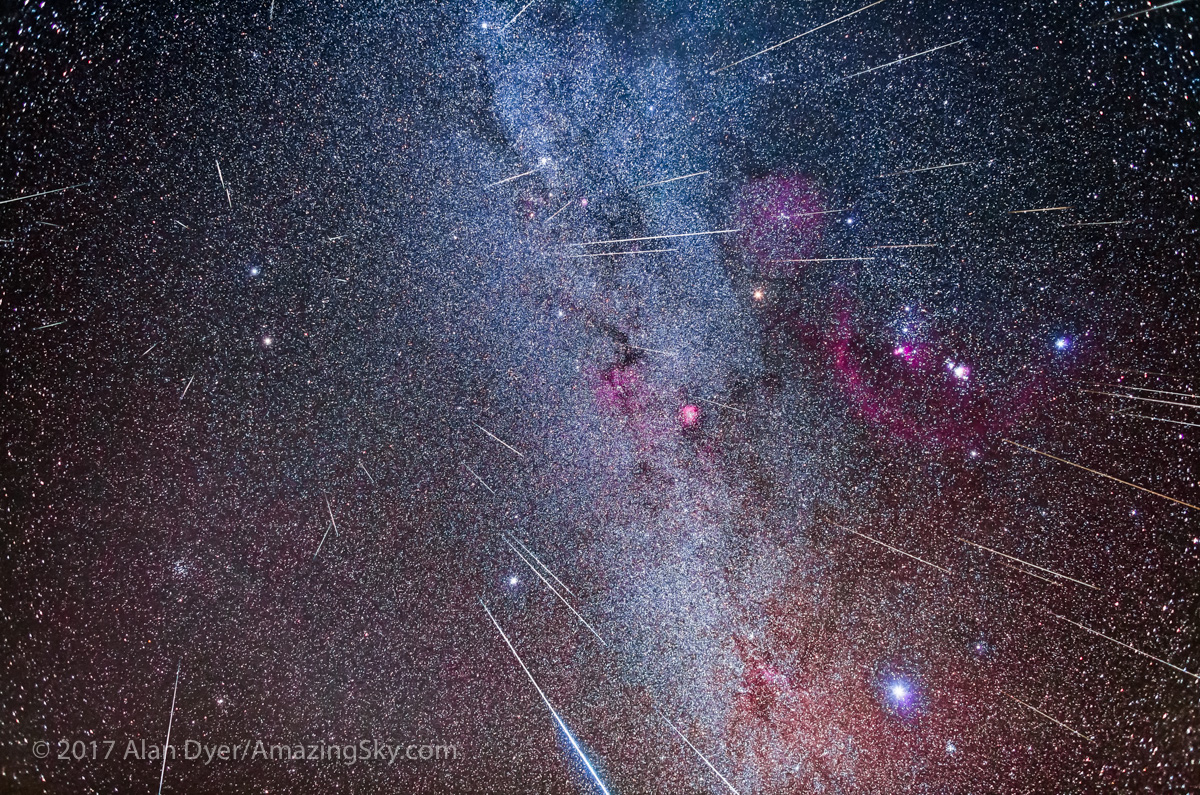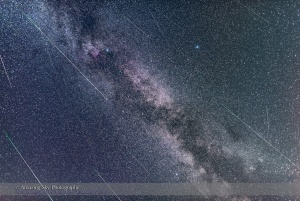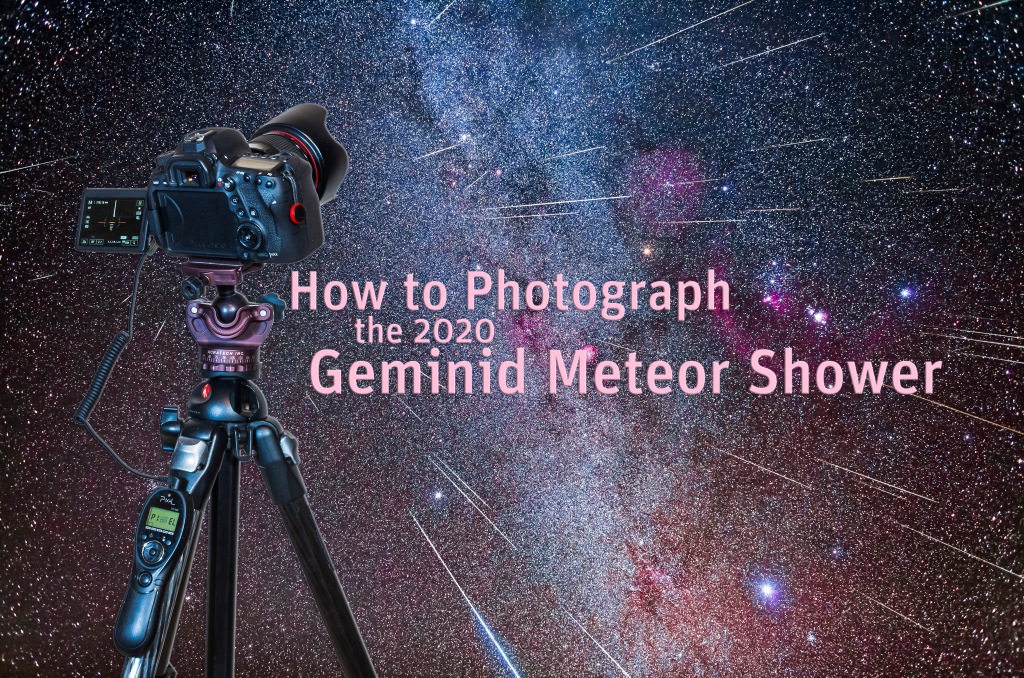
The annual Geminid meteor shower peaks under ideal conditions this year, providing a great photo opportunity.
The Geminids is the best meteor shower of the year, under ideal conditions capable of producing rates of 80 to 120 meteors an hour, higher than the more widely observed Perseids in August. And this year conditions are ideal!
The Perseids get better PR because they occur in summer. For most northern observers the Geminids demand greater dedication and warm clothing to withstand the cool, if not bitterly cold night.
A Good Year for Geminids
While the Geminids occur every year, many years are beset by a bright Moon or poor timing. This year conditions couldn’t be better:
• The shower peaks on the night of December 13-14 right at New Moon, so there’s no interference from moonlight at any time on peak night.
• The shower peaks in the early evening of December 13 for North America, about 8 p.m. EST (5 p.m. PST). This produces a richer shower than if it peaked in the daytime hours, as it can in some years.
The two factors make this the best year for the Geminids since 2017 when I shot all the images here.

What Settings to Use?
To capture the Geminids, as is true of any meteor shower, you need:
- A good DSLR or mirrorless camera set to ISO 1600 to 6400.
- A fast, wide-angle lens (14mm to 24mm) set to f/2.8 or wider, perhaps f/2. Slow f/4 to f/.6 kit zooms are not very suitable.
- Exposures of 30 to 60 seconds each.
- An intervalometer to fire the shutter automatically with no more than 1 second between exposures. As soon as one exposure ends and the shutter closes, the next exposure begins.
- Take hundreds of images over as long a time period as you can on peak night.
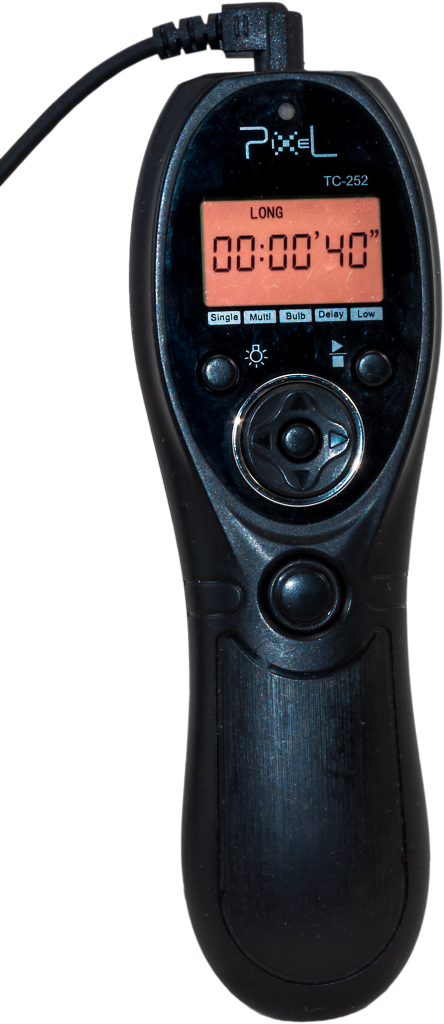
Out of hundreds of images, a dozen or more should contain a meteor! You increase your chances by using:
- A high ISO, so the meteor records in the brief second or two it appears.
- A wide aperture, to again increase the light-gathering ability of the lens for those fainter meteors.
- A wide-angle lens so you capture as much area of sky as possible.
- Running two or more cameras aimed at different spots, perhaps to the east and south to maximize sky coverage.
- A minimum interval between exposures. Increase the interval to more than a second and you know it’s during that “dark time” when the shutter is closed that the brightest meteor of the night will occur. Keep the shutter open as much as possible.

When to Shoot?
The radiant point of the shower meteors in Gemini rises in the early evening, so you might see some long, slow Earth-grazing meteors early in the night, streaking out of the east.
For Europe the peak of the shower occurs in the middle of the night of December 13/14.
For North America, despite the peak occurring in the early evening hours, meteors will be visible all night and will likely be best after your local midnight.
So wherever you are, start shooting as the night begins and keep shooting for as long as you and your camera can withstand the cold!
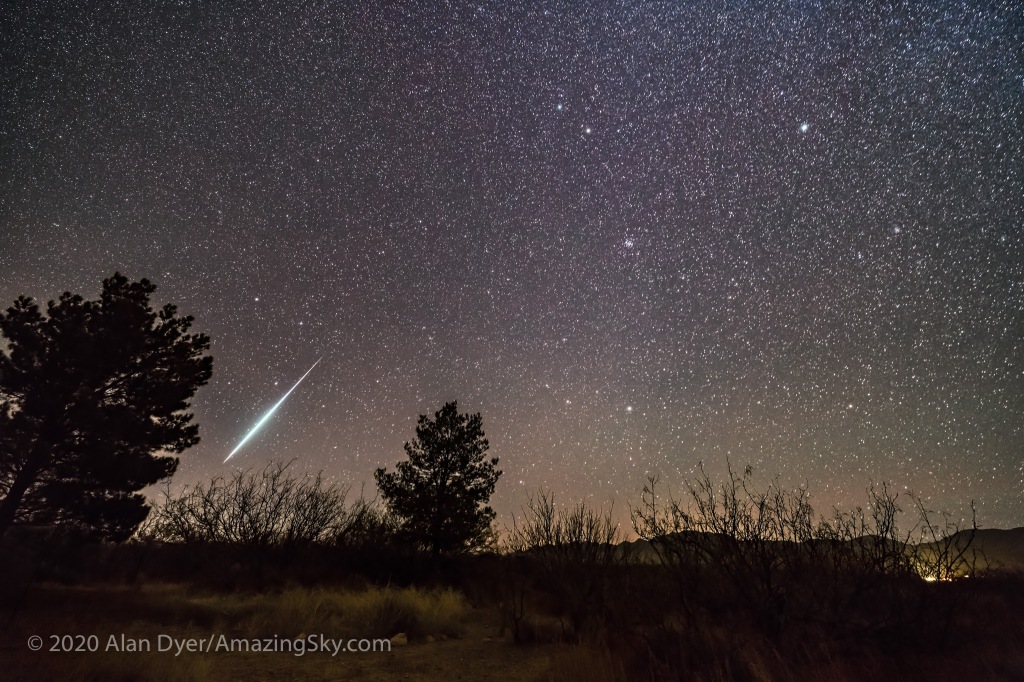
Where to Go?
To take advantage of the moonless night, get away from urban light pollution to as dark a sky as you can. Preferably, put the major urban skyglow to the west or north.
While from brightly lit locations the very brightest meteors will show up, they are the rarest, so you’d be fortunate to capture one in a night of shooting from a city or town.
From a dark site, you can use longer exposures, wider apertures and higher ISOs to boost your chances of capturing more and fainter meteors. Plus the Milky Way will show up.
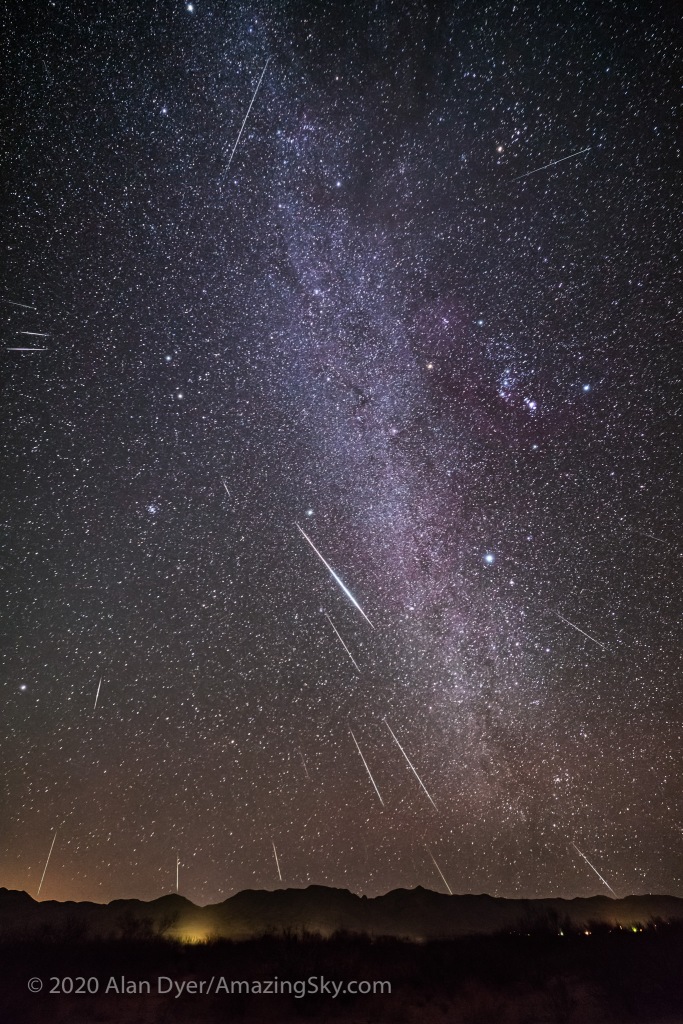
Where to Aim?
You can aim a camera any direction, even to the west.
But aiming east to frame the constellation of Gemini (marked by the twin stars Castor and Pollux) will include the radiant point, perhaps capturing the effect of meteors streaking away from that point, especially if you stack multiple images into one composite, as most of my images here are.

Using a Tracker
Using a star tracker such as the Sky-Watcher Star Adventurer shown here, makes it possible to obtain images with stars that remain untrailed even in 1- or 2-minute exposures. The sky remains framed the same through hours of shooting, making it much easier to align and stack the images for a multi-meteor composite.

However, a tracker requires accurate polar alignment of its rotation axis (check its instruction manual to learn how to do this) or else the images will gradually shift out of alignment through a long shoot. Using Photoshop’s Auto-Align feature or specialized stacking programs can bring frames back into registration. But good polar alignment is still necessary.
If you aim east you can frame a tracked set so the first images include the ground. The camera frame will move away from the ground as it tracks the rising sky.

Using a Tripod and Untracked Camera
The simpler method for shooting is to just use a camera (or two!) on a fixed tripod, and keep exposures under about 30 seconds to minimize star trailing. That might mean using a higher ISO than with tracked images, especially with slower lenses.
The work comes in post-processing, as stacking untracked images will produce a result with meteors streaking in many different orientation and locations, ruining the effect of meteors bursting from a single radiant.
To make it easier to stack untracked images, try to include Polaris in the field of the wide-angle lens, perhaps in the upper left corner. The sky rotates around Polaris, so it will form the easy-to-identify point around which you can manually rotate images in editing to bring them back into at least rough alignment.
Covering the steps to composite tracked and untracked meteor shower images is beyond the purview of this blog.
But I cover the process in multi-step tutorials in my How to Photograph and Process Nightscapes and Time-Lapses ebook, linked to above.
The images shown here were layered, masked and blended with those steps and are used as examples in the book’s tutorials.

Keeping Warm
Keeping yourself warm is important. But your camera is going to get cold. It should work fine but its battery will die sooner than it would on a warm night. Check it every hour, and have spare, warm batteries ready to swap in when needed.
Lenses can frost up. The only way to prevent this is with low-voltage heater coils, such as the DewDestroyer from David Lane. It works very well. Other types are available on Amazon.
Good luck and happy meteor hunting!
— Alan, December 2, 2020 / © 2020 AmazingSky.com

